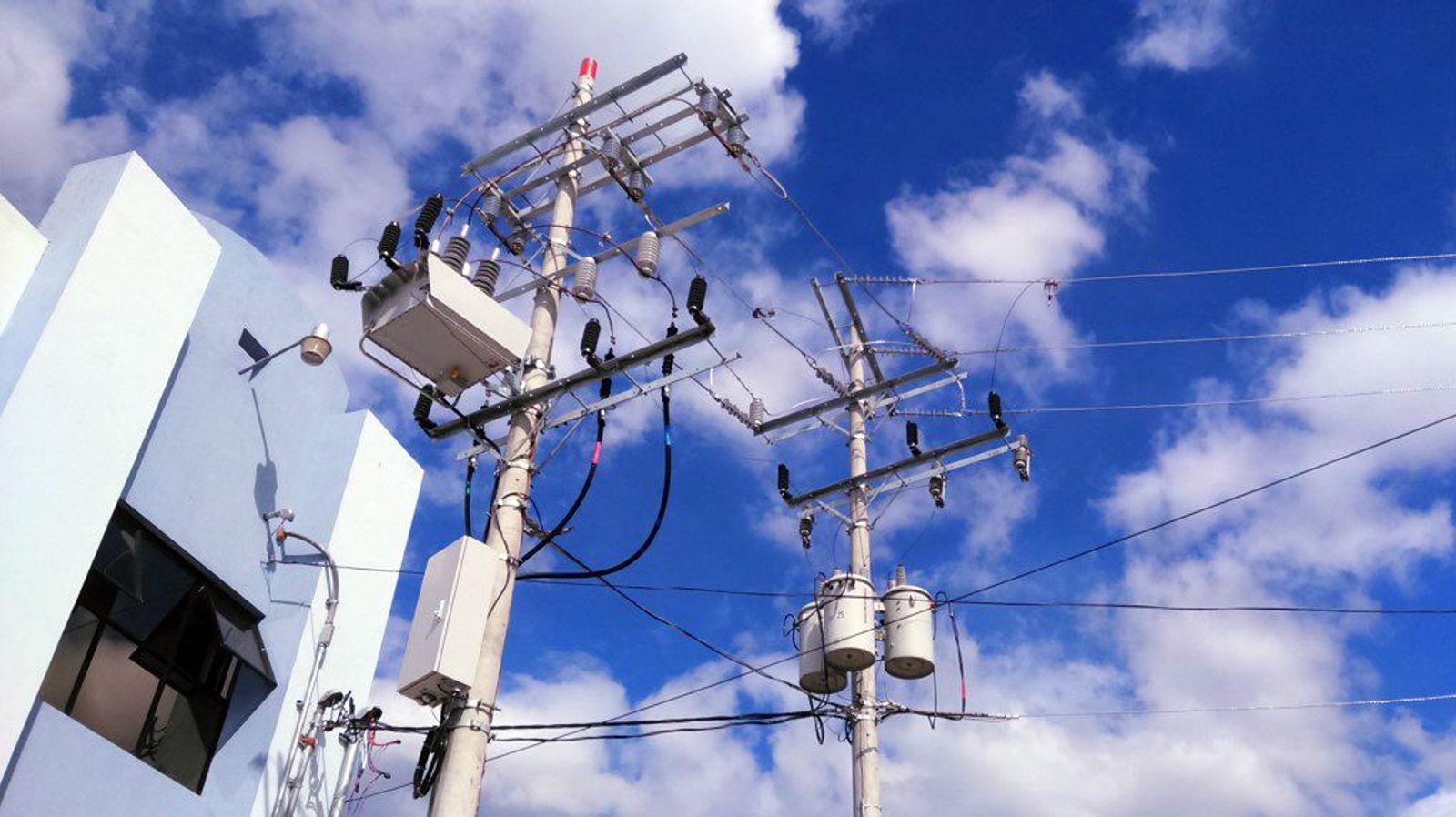Overhead to Underground Conversions with NOJA Power OSM Reclosers
10th Apr 2024

In electricity distribution, Overhead distribution to underground cabling conversion is commonplace.
These two methods will coexist into the electricity distribution future, and the transition between overhead to underground, or vice versa, will be a standard engineering practice.
The transition from overhead to underground often requires an update to protection configurations. Faults on underground cables look different to faults on overhead lines, and the protection response to both cases will vary accordingly.
Fortunately, modern reclosers such as the OSM Recloser system can offer both protection formats simultaneously, determining whether the fault is on the underground or overhead side of the recloser, and intelligently deciding whether to apply reclosing on the line side, or single shot to lockout on the cable side.
In this article, we explore an overview of this protection technique, along with a few examples of overhead to underground general arrangements.
Lines and Cables - For Electrical Engineering Newcomers
A quick note for new Power Systems engineers, we should clarify the terminology used in this article:
- “Lines” refer to the overhead conductors, while “cables” refer to underground conductors.
- While technically a cable is an insulated conductor, there are examples of overhead lines which are covered to provide frontline mitigation for wildlife and vegetation contact. These are known as “covered conductor”. (For more information on covered conductor, here’s a recent article from NOJA Power.)
- When engineers say “line side”, they are referring to the overhead conductor side of an asset.
- This is important, because “source side” and “load side” aren’t constant anymore. With solar and renewable energy throughout the grid, the source and load side depends on the time of day. Line side is always the line side, irrespective of power flow.
And so we enter our discussion on directional protection.
The Modern Electricity Distribution Grid - Directionality
In yesteryear’s distribution grid, engineers could reasonably assume a single power flow direction for faults. With centralised generation and radial distribution, protection was graded on time and fault magnitude.
Directional protection was generally only applied on earth fault techniques, where circulating earth fault currents could cause spurious trips on adjacent feeders.
Today however, ring style networks are common, offering alternative backfeed options to minimise downtime for customers. This implies that the power source is variable, and that protection must change subject to the power direction.
Equally, grid proliferation of renewable energy changes the dynamics of electricity distribution. Distributed sources such as solar may cause feeders to flow backwards under system normal, but the introduction of a fault causes inverters to disconnect, causing fault energy to flow opposite to normal power in milliseconds.
Switchgear that handles overhead to underground connections need the ability to handle different fault settings subject to the fault location.
General Overhead to Underground Protection Principles

Figure 1 - Example case of an Overhead to Underground connection using an OSM Recloser
When developing protection for an overhead to underground connection, faults occurring on the line side of the breaker could benefit from reclosing if fed from the cable side.
In this application, the OSM Recloser with RC series control could be programmed to deliver a full reclose sequence for faults on the overhead line section, while offering a single trip to lockout for the underground cable.
As faults occur, the OSM Recloser selects the protection element to execute based on the voltage and current angles, fault type and configuration.

Figure 2 - Ring Topology with Underground Cable Section
Figure 2 shows another common overhead to underground protection application. This design is commonly used where distribution networks need to cross roadways or rail infrastructure. While the network in this scenario could be fed from either source, each recloser could be programmed to offer single shot to lockout when faults occur on the underground cable section, while offering a full reclose sequence for overhead sections.
Overhead to Underground Examples
All NOJA Power OSM Reclosers can be used for overhead to underground connections.
Furthermore, OSM 310 series products have DIN taper bushings under the silicone bushing boots. This allows engineers to terminate underground cables directly onto the OSM Recloser.
However, some distribution engineers prefer to use conventional overhead to underground terminations and connect to the standard OSM Recloser terminals.

Figure 3 - An Overhead to Underground OSM Recloser in Costa Rica
Figure 3 shows a typical suburban application of overhead to underground connection. The Underground cables are brought up the pole, before terminated onto the recloser bushings.

Figure 4 - an Industrial Overhead to Underground Connection
In the figures 4 (above) and 5 (below), overhead to underground connections, the underground cables are brought up to a stand-off bracket, and a final line bridge is made between the recloser terminals and the underground cables. This arrangement allows for surge arrestors to be installed on either side of the recloser. A working point of isolation is also included by means of off-load disconnectors, seen connected above the OSM Recloser.

Figure 5 - Industrial Overhead to Underground Connection
Conclusion
Overhead to Underground connection with OSM Reclosers are a common network application. The varied protection requirements for lines and cables imply a requirement for versatile electrical protection capabilities. NOJA Power’s OSM Recloser can handle these multiple requirements simultaneously.
It is becoming more common to transition from overhead to underground cables in the distribution network, and our products provide the physical interface to do that - even having the underground cables terminate directly to our dead break elbows, onto our bushing extensions - combined with the protection functionality provided at these transition points.
- says NOJA Power Group Managing Director Neil O'Sullivan.
Photos © NOJA Power
To register interest or for more information, contact OHUG Power Equipment - your local NOJA Power Distributor.
Article originally published by NOJA Power.


